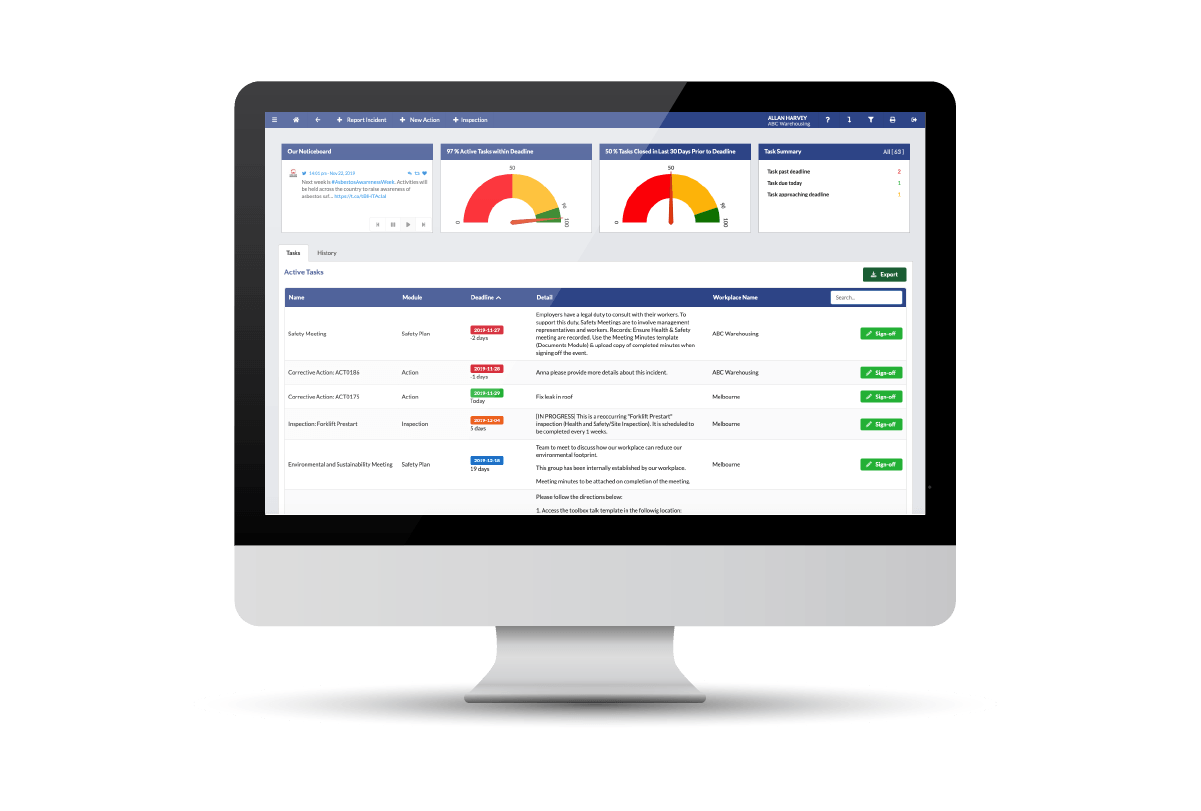
Your duty of care when it comes to the safety of your contractors
Engaging contractors is an everyday part of business for many organisations. In some sectors – like retail, manufacturing, or construction for example – contractors can make up the larger portion of a workforce.
As such, it is important that people managers, HR teams or business owners are aware of their legal duties when it comes to contractors.
Who or what is a contractor?
At its simplest a contractor is a person who performs work under a service of contract for a set fee. The business engaging the contractor does not pay wages or superannuation or provide other benefits such as leave entitlements to the contractor.
Contractors will typically:
- work at their own initiative to achieve a stated result as agreed with by the business that engages them.
- be free to provide services to multiple clients.
- have the option (often in agreement with the business that engages them) to delegate all, or some, tasks to another person – this is commonly referred to as sub-contracting.
- be responsible for rectifying poor work at their own cost and effort.
- provide their own tools and equipment to complete the agreed service.
In many respects, contractors retain a certain degree of independence from the business that engages them. Yet the extent to which this independence extends to workplace health and safety duties is worth a closer look.
If you need some help determining whether one of your workers is an employee or a contractor, take a look at the ATO Employee/Contractor Decision Tool for guidance.
Common misconceptions from businesses when it comes to contractors…
Many businesses misunderstand whether they have a duty of care towards the contractors they engage.
The health and safety legislation places a duty of care on businesses to provide a safe workplace for all workers and other persons in a workplace under its control. In addition, the legislation states that those “workers” extend past your employees. The legislation states that workers include anyone who carries out work for the business.
This means a worker can be an employee; a contractor or subcontractor, of the employee of a contractor or subcontractor; an employee of a labour hire company who works in the business; or an apprentice, trainee; work experience student; or a volunteer. It’s a long list!
At the same time the legislation clearly states that contractors have a duty of care towards their own employees and to everyone else at a workplace where they are working.
So, where and with whom does the buck stop?
The short answer to this question is – both. Both the business engaging the contractor, and the contractor itself have safety responsibilities. But how does this work in practice?
Take a 14-day trial to see how you can better manage contractors
How does this work in the real world?
Yes – it can be tricky to determine. Clear information about the scope of this responsibility can be hard to come by.
The business engaging the contractor is best to remember that it’s health and safety responsibility extends to contractors that they engage.
Irrespective of what practices the contractors have in place, the business engaging the contractor should keep in mind that it has a responsibility to maintain a safe and healthy working environment for everyone in your workplace, or impacted by your workplace operations. This is for everyone – your permanent staff, your freelancers, contractors, and even the people who come to visit.
Recent legal decisions confirm that contractors are responsible for understanding how to conduct their work safely, for which they have been engaged to undertake. This means that you don’t need to be an expert of their domain or stand next to them as they complete the job you have engaged them to do.
What practical measures can you take to ensure of a safe working environment for contractors?
As an employer it is expected that the following is done when engaging a contractor:
- Clearly define the tasks a contractor is being engaged to undertake.
- Determine if the contractor’s work is expert work over which the principal has little knowledge or control.
- Identify how the contractor’s expertise will be confirmed e.g. evidence of licensing, accreditation.
- Clearly assign responsibilities for expert work and risk management in contracts. Identify hazards associated with elements of the work controlled by the principal (employer) and implement risk controls for all persons including contractors.
When working with contractors it is useful to:
- Induct them onto all worksites under the control of the business that has engaged them, and ensure they have access adequate first aid and emergency response equipment and procedures
- Confirm that they have documented evidence that they are able to carry out their work safely
- Request that they report all workplace related incidents and/or injuries as soon as practicable after they occur
- Manage all contractors who breach safety rules (don’t instruct them how to work safely as this may result in exposure to increased risk).
- Ensure that their insurance and licenses/qualifications remain current.
Using WHS software to help…
Safety software is a great way to help manage your duty of care when it comes to the safety of your contractors. You can use software to ensure that you have everything in place for a successful engagement with your contractors.

Safety Champion allows you to enter and manage all relevant details about your contractor in one central platform.
- Recurring safety tasks can be created and linked to the specific contractor. Examples of these may include (but not be limited to): internal audits, equipment checks (say tests tag) and Regular safety monitoring meetings.
- Contractors Insurances, Qualifications and Licenses can be managed using the Contractor and the Insurance Modules. Contractor details can be entered in the Contractor Module and their insurances and qualifications can be entered into the Insurance Module. Entries can then be linked for the Contractor to create recurring tasks specific for that Contractor.
- Contractor inductions can be managed.
- Contractor documentation and correspondence can be saved and monitored so you are ready when expiration dates are coming up.
- Contractor related reported incidents can be managed through the incident module – the Incident Module allows incidents to be reported and saved reports can be saved along with evidence relevant to that incident.
- Contractor Audits can be scheduled and completed on time.
Using Safety Champion effectively means that you can be assured that:
-
All information related to contractors engaged – like insurances and licenses – is up to date;
-
All incidents relating to contractor safely are being managed with real-time notification, and;
-
All correspondence relating to a contractor is in a centralised location.



